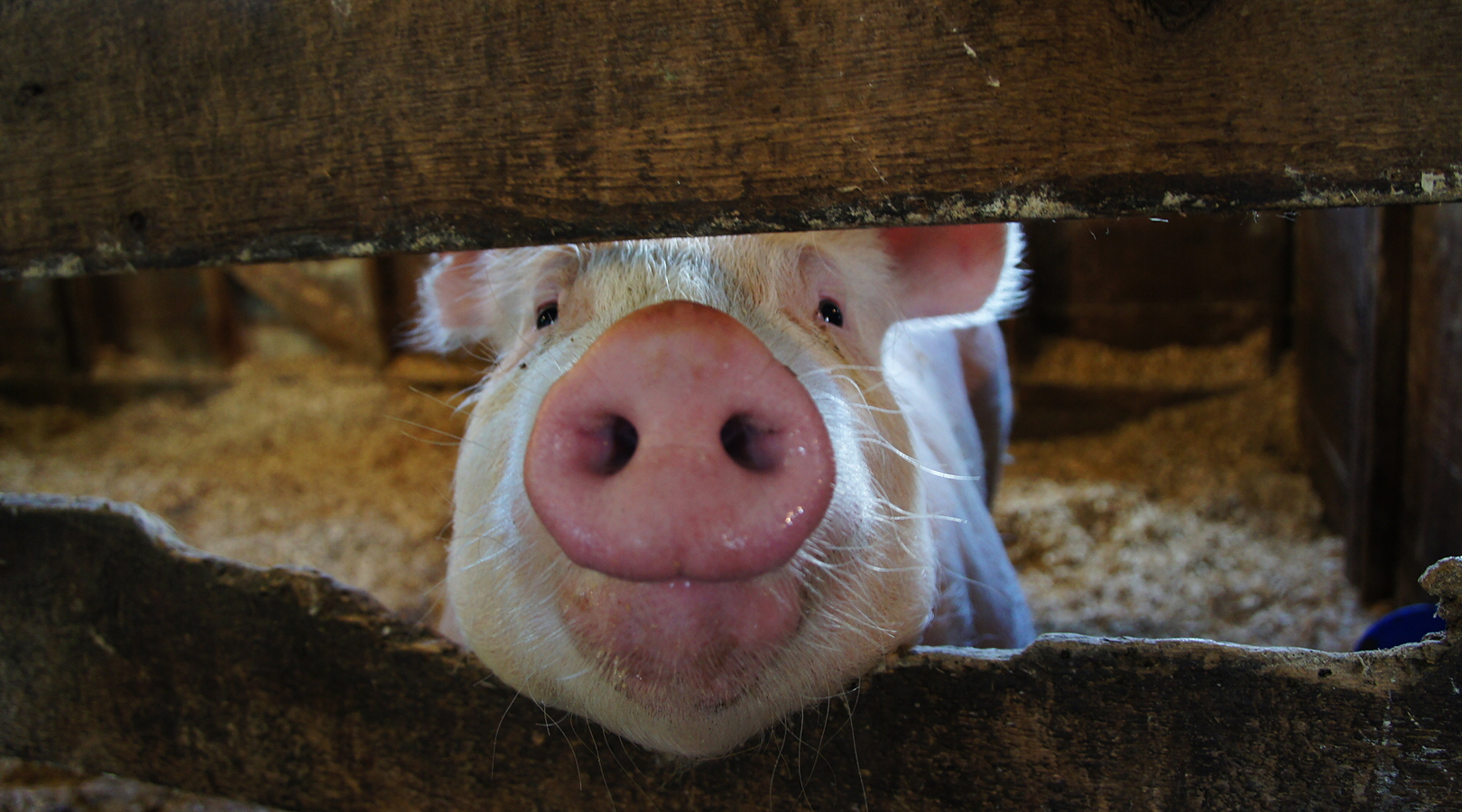By Yasufumi Saito
The price of lean hogs—the name of butchered pork in commodity markets—has plummeted drastically from its peak last summer, reaching a record low due to a loss of equilibrium in supply and demand. Experts warn of “the greatest collapse” in pork prices if the trend continues.

As of March 13, the April lean hogs price was down more than 35 percent to $62.10 per hundredweight from its peak of $97.65 in July 2014 on the Chicago Mercantile Exchange, while live cattle and feeder cattle prices have been trending upward.
Why is the drop occurring? “Well, there is a lot of reasons for it,” said Steve Meyer, president of Paragon Economics in Iowa. But it’s basically because significant changes are happening in both supply and demand.
Supply side
Last year the spread of Porcine Epidemic Diarrhea virus hit pork producers nationwide, hoisting lean hogs prices to record highs with an estimate that the virus’s high fatality rate for piglets might bring a shortage of pork.
As a result of higher hog prices and relatively low feed prices, pork farmers enjoyed a windfall profit that motivated them to raise more pigs.
“We were very profitable a year ago,” Meyer looked back. But success can become a double-edged sword. “Now, supply is significantly larger than we expected.”
Consequently, despite the headwind of PEDv, pork production in 2014 was an estimated 22.8 billion pounds, down just 1.5 percent from 2013, according to the U.S. Department of Agriculture.
“The reality that pork production was only down two percent in 2014 and is now moving up rapidly in 2015 helped create what may be the greatest collapse of hog prices ever,” wrote Chris Hurt, professor of agribusiness economics at Purdue University, in his latest report.
Supply is still growing at a rapid pace. This week U.S hog slaughter rose 10 percent to 2.02 million from a year earlier, according to the USDA.
“When the price started to fall, producers have a strong incentive to sell pigs,” Meyer added.
International demand side
International trade, a crucial price determinant because the U.S. is the world’s third-largest producer and consumer, and the largest exporter of pork, is in a headwind.

U.S pork exports in January fell 20 percent in quantity and 18 percent in value from a year ago, according to the U.S. Meat Export Federation.
The recent labor dispute on the West Coast, where the ports are keystones to trade with Asia, is a major cause of the decline, several experts pointed out.
A strong dollar making U.S. pork relatively more expensive on the world market is also blamed, especially when the European Central Bank is trying to make the euro cheaper through monetary policy—massive quantitative easing.
“In Japan and several other Asian destinations, a huge influx of low-priced European pork has poured onto the market since the EU pork industry lost access to Russia,” Meat Export Federation President and CEO Philip Seng noted in a report.
Last summer, Russia banned imports of a broad range of U.S and European food in response to Western sanctions over the territorial struggle in Ukraine.
“Combine this with the West Coast port impasse and the euro at an 11-year low versus the U.S. dollar, and January was something of a perfect storm for U.S. pork,” Seng added.
Domestic demand side
On the other hand, “Domestic demand has been extremely good the last two years,” said Meyer. “We’ve seen some of the best demand levels in many reports, mainly driven by an interest in protein diet.”
Real per capita consumer expenditure for pork grew 15.7 percent between 2009 and 2014, according to the latest report from the National Pork Board.
But the growth in domestic demand is insufficient to offset the loss in international demand and the negative factor on the supply side.
“We think it’s still good, but it may not be growing as fast as it should be,” said Meyer
[field name=”porkcomparison”]
That may be because consumers aren’t seeing much of a price decline.
While the monthly average market price for hogs decreased 43 percent to $54.05 per hundredweight in January from $95.17 in July 2014, the monthly average retail price of pork dropped only 3.3 percent to $3.99 per pound from $4.13 in the same period, according to the USDA. Relatively unchanged retail prices can be a minus factor for domestic demand, as people cannot realize the benefit of the hog price slump.
“There’s always a pretty large gap. Retailers are not likely to change prices. It tends to be more stable,” Meyer explained. “You can’t reduce those retail prices unless you see long-term prospects of lower cost products.”
Forecast
At present there’s no expectation that the hog market will firm up. “The hog price forecast is reduced as greater production and lower exports imply greater supplies for the domestic market,” the USDA wrote in its latest outlook report.
The USDA expects that hog prices will average $54 to $58 per hundredweight in 2015, more than 26 percent below prices last year.
Meyer’s view is even more severe. “We won’t be surprised to see it get down” even more, he said, perhaps another 10 percent drop.

